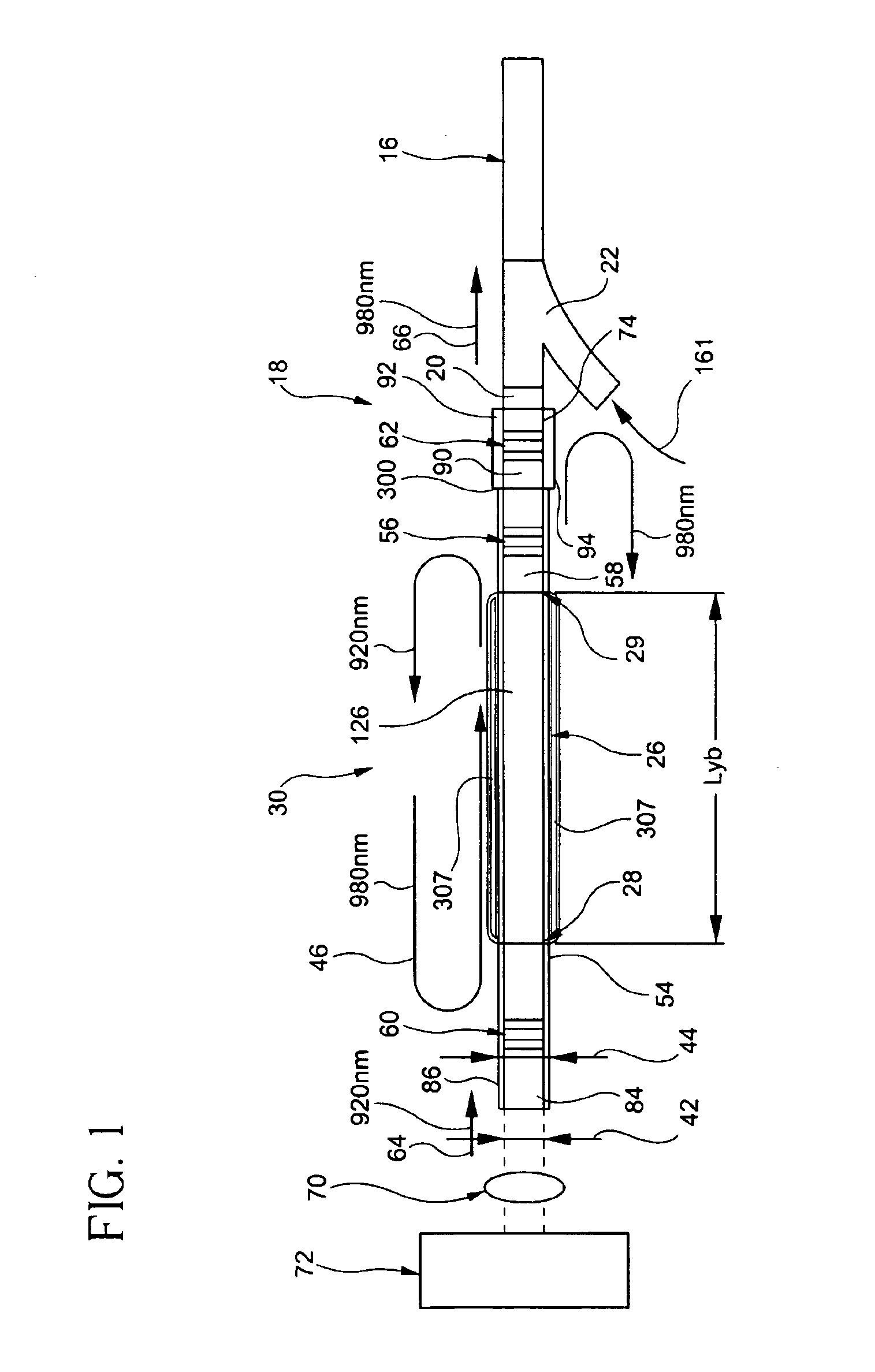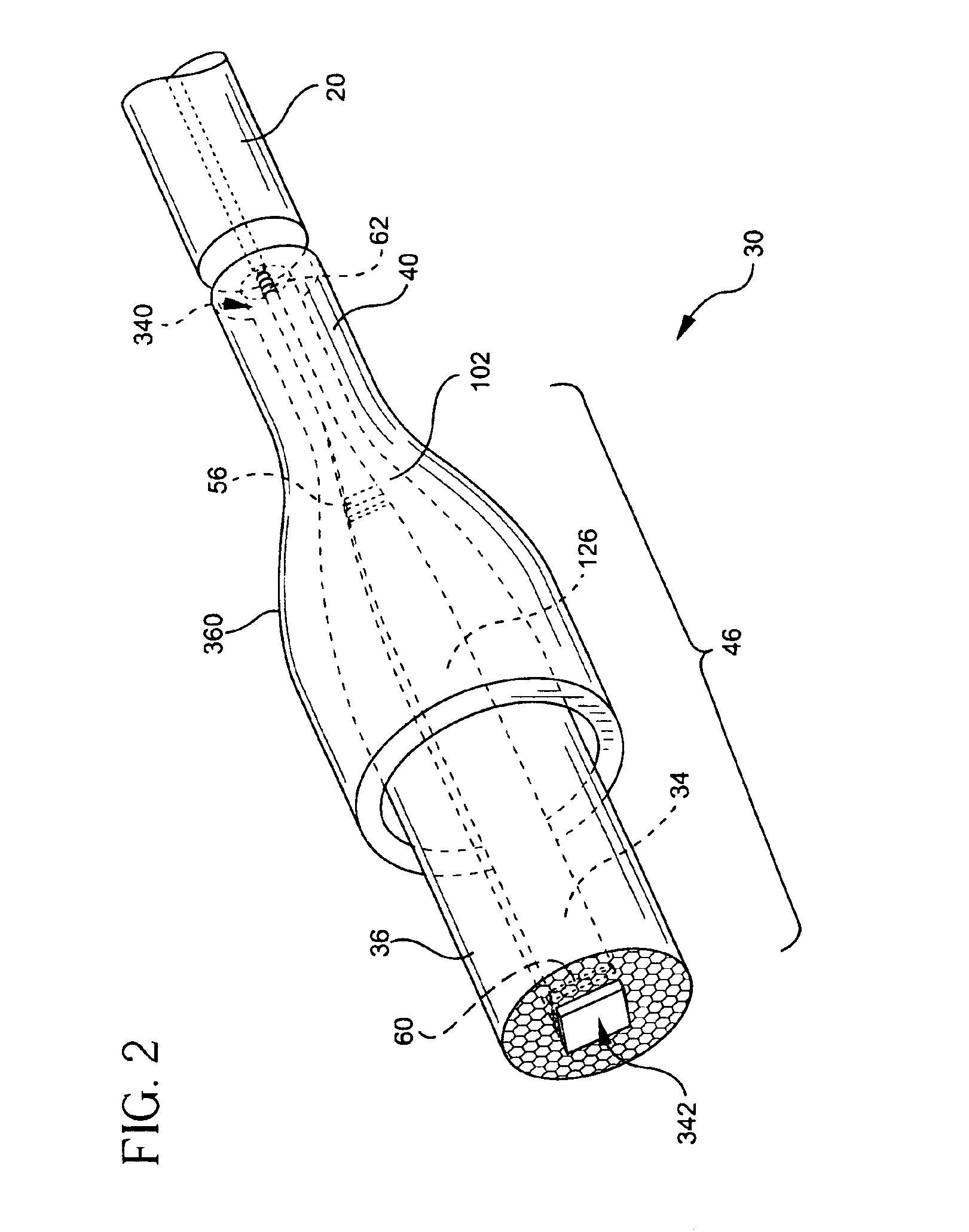Three-level air-clad rare-earth doped fiber laser/amplifier
a rare earth doped, fiber laser technology, applied in the direction of cladding optical fibre, semiconductor laser structural details, semiconductor lasers, etc., can solve the problems of ineffective cladding pumping technique in practice, limited practical double-clad amplifier and lasers, and inability to pump pure three-level fiber lasers. achieve the effect of facilitating doping and lowering the effective refractive index
- Summary
- Abstract
- Description
- Claims
- Application Information
AI Technical Summary
Benefits of technology
Problems solved by technology
Method used
Image
Examples
Embodiment Construction
[0029]The optically-active fiber or waveguide for possible use as a fiber laser, or other optic structure of the present invention is shown in FIGS. 1 and 6 and is generally described and depicted herein with reference to several exemplary or representative embodiments with the same numbers referenced to the same or functionally similar parts. In general, different design considerations need to be traded-off to provide a high-powered three-level transition fiber laser that can be embodied in different ways.
[0030]Referring to FIG. 6, an air-clad fiber optic structure or apparatus 30 includes a guidance region 84 containing an actively doped gain portion 90. An air-clad region 86 surrounds the guidance region 84 and has a lower effective refractive index than the refractive index of the guidance region for the actively doped gain portion 90 to transition efficiently at a high three-level optical transition.
[0031]As one possible embodiment of the fundamental mode guidance region, a sol...
PUM
 Login to View More
Login to View More Abstract
Description
Claims
Application Information
 Login to View More
Login to View More - R&D
- Intellectual Property
- Life Sciences
- Materials
- Tech Scout
- Unparalleled Data Quality
- Higher Quality Content
- 60% Fewer Hallucinations
Browse by: Latest US Patents, China's latest patents, Technical Efficacy Thesaurus, Application Domain, Technology Topic, Popular Technical Reports.
© 2025 PatSnap. All rights reserved.Legal|Privacy policy|Modern Slavery Act Transparency Statement|Sitemap|About US| Contact US: help@patsnap.com



